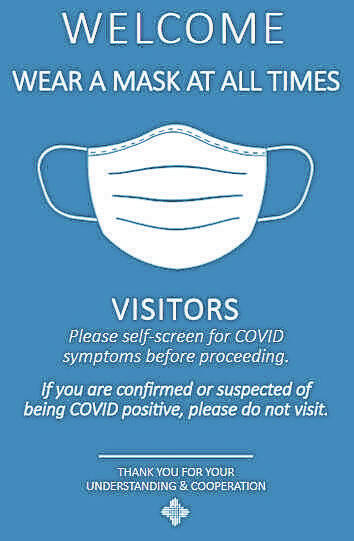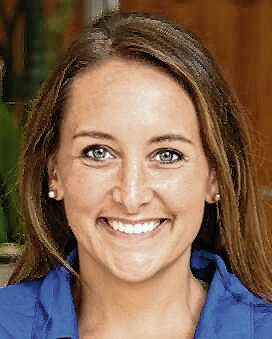Help control the patient population. Wear a mask inside a health care facility.
While most public places no longer require people to wear masks due to the COVID-19 pandemic, health care facilities across the United States are still requiring them to be worn, per guidance from the Centers for Disease Control and Prevention.
That includes Schneck Medical Center in Seymour. Upon entry, signs advise visitors to self-screen for COVID-19 symptoms before proceeding and wear a mask at all times while inside the hospital.
“If you are confirmed or suspected of being COVID positive, please do not visit. Thank you for your understanding and cooperation,” the signs read.
Masks and hand sanitizer are provided for those who can enter.
Natalie Wiethoff, an infection preventionist at Schneck, said the hospital continues to follow guidance from the CDC that is specific to health care facilities to best protect patients when providing direct patient care.
She said health care facilities base their masking requirements off of the COVID community transmission level, which is different from the community level that can be used by the general public in non-health care settings.
The transmission level has been tracked by the CDC throughout the pandemic, but Wiethoff said in September, the CDC changed the guidance for health care facilities to look at the community transmission level when determining masking, or source control.
“The transmission level for Jackson County is available on the CDC website and is monitored daily,” she said. “We also monitor Jennings, Scott and Washington county transmission because Schneck serves those communities, as well. We then base our decision-making off of the county with the highest transmission in order to best align with the CDC guidance.”
The transmission level is measured by two things: The presence and spread of COVID-19 in the community using the total number of new cases per 100,000 people within the last seven days and the percentage of positive diagnostic and NAAT tests during the last seven days.
“We are using this metric as recommended by the CDC because it is the best way to protect our patients and allows for early intervention before there is a strain on our health care system,” Wiethoff said. “That’s why we look at that because then you’re kind of ahead of the game.”
In regards to the current status of COVID in Jackson County, Wiethoff said the strain on the health care system is less now than it was when the pandemic started, but the spread in the community is still very prevalent. That’s why the county has a high transmission level.
“It’s still being transmitted in the community at a high level, which is why (the CDC) recommends that people who come into the hospital wear masks,” she said. “However, that spread is not carrying over into high patient admission, ventilator use, the heavy strain on the hospital system, which is good.”
COVID is still there, and now, it’s also cold and flu season, she said.
“During cold and flu season, it is important to remember that masks can also decrease the spread of other respiratory illnesses,” Wiethoff said. “We continue to monitor not just COVID illness but all respiratory illnesses daily and have already seen a significant increase in RSV cases this year, not just in our community but across the state.”
Because of that, she said she doesn’t see masking ending at Schneck and other health care facilities any time soon.
“The No. 1 way to prevent those from spreading, as well, is masking,” she said. “I think that that will continue to be something that I check daily just to watch the trends and see how it’s looking from month to month and if there’s anything we can predict. You can’t predict the future, but it’s nice to just be ahead of it and know what’s coming.”
One positive at Schneck is there’s no longer someone stationed at the entrances to screen visitors for COVID symptoms. That move also was based on CDC guidance.
“Everything that we do as a health care facility as well as others is all based off of their guidance and their recommendation based off of the trends that we monitor,” Wiethoff said. “It’s more just to protect our patient population. I think most people are really good about understanding that. We don’t see a lot of pushback from that. I think people understand when they come into a health care facility that that’s kind of an expectation now.”
Besides wearing a mask, Wiethoff encourages people to be mindful of handwashing and stay at home if they have symptoms to prevent the spread of COVID, RSV, flu and other respiratory illnesses.


